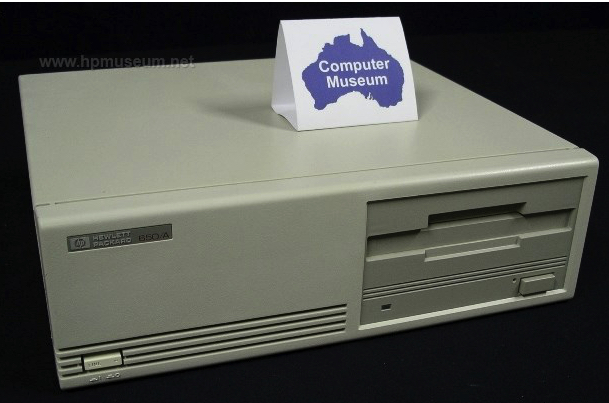History (1989): Storage Giant Hewlett-Packard Into Magneto-Optical Drive
5.25-inch unit developed by Sony and jukebox holding up to 32 disk cartridges
This is a Press Release edited by StorageNewsletter.com on July 10, 2019 at 2:18 pmHewlett-Packard is the first big actor in computer business to be convinced by one of the numerous Japanese manufacturers in magneto-optical drives, Sony.
In April 1989, Hewlett-Packard Co. entered the rewritable optical disk drive market with a 5.25-inch drive developed by Sony Corp. and a jukebox holding up to 32 cartridges, one of the first automatic access systems to several erasable optical disks announced in the world.
Big event
It’s a great event. Even if NeXt, Steve Jobs’ company has already began working on this subject, even if Sony already announced a magneto-optical disk on its News workstation, even if Hitachi recently launched its own drive, Hewlett-Packard is the first big computer company to officially take a position in erasable optical disk technology. Now other companies will probably follow in this field, DEC and IBM notably.
Another important matter: Hewlett-Packard is the first one with Hitachi and Eastman Kodak to announce a magneto-optical disk juke-box. Several automatic WORM disk libraries were already available, but none for erasable disks, and to go from one to the other shouldn’t be a problem since the two kinds of 5.25-inch cartridges have the same physical specs.
Credibility of the technology
Something more: HP’s arrival should help the credibility of the new magneto-optical support. But let’s not exaggerate. Many observers thought the same when IBM marketed its WORM digital optical disks from Panasonic, the 3363 model, that turned out to be a big flop and not only because the performance of this disk did not equal the others on the market. Nothing surprising about HP being one of the first companies to develop this new optical support. The American firm is already closely involved in peripherals, for storing (magnetic disks, CD-ROMs) or printing (laser and DeskJet printers, plotters, etc.). The U.S. and Japanese partners have already taken part to another project together on storage, Data-DAT.
Direct Access Secondary Storage
Aiming the OEM market, HP names this new memory DASS or Direct Access Secondary Storage, which means a support that could bean intermediary between disks and magnetic tapes.
What are the specs of the drive and the juke-box? The first one named HP C1711A, has a double-sided disk totaling 650MB, 95ms average access time and 680KB/s transfer rate. It uses continuous-composite format. It will be available to OEMs in June for $6,190, plus $249 for the disk in its cartridge. A special version will be proposed to the HP 9000 Serie 300 workstations.

The jukebox
A two-drive version will also be available to be placed in a 32 optical disk cartridge jukebox. This autochanger, the HP C1710A model will retail for $29,900 with the two drives, and a total capacity of 20.8GB. Announced MTBF is 20,000 hours, the equivalent of one million cartridge exchanges. Other features include: 7s average disk-exchange time, a modular design for vertical mounting in a desk-side cabinet or horizontal mounting on 19-inch racks; SCSI interface. Evaluation units are in place now and HP expects to begin full production at the end of 1989.
The proper solution
For storage, the proper solution for workstations and later personal computers in tomorrow’s network will be a configuration with a quick high-capacity Winchester disk, before a removable magneto-optical disk, slightly slower but able of storing a large amount of data for important programs and backup, and finally a high-capacity but slow Data-DAT unit for archiving.
This article is an abstract of news published on the former paper version of Computer Data Storage Newsletter on issue ≠15, published on April 1989.













 Subscribe to our free daily newsletter
Subscribe to our free daily newsletter

